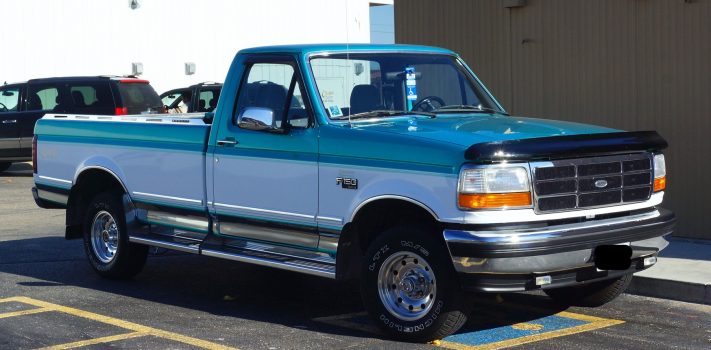Email a copy of 'Lessons Learned from My First Bug Out Truck - Part 2, by H.J.' to a friend
8 Comments
- Ad SOURCE FOR IVERMECTIN / HCQ, ANTIBIOTICS, ALL REGULAR MEDS“Mygenericstore” is a well-established pharmacy service that deals primarily with generic medicines produced by quality-assured manufacturers from developing countries.
- Ad Ready Made Resources, Trekker Water Filtration SystemUsed throughout the World


Thank you HJ for the informative and inspiring post. My project, of rebuilding a ‘98 AM Gen H1 wagon seems daunting, but this winter hopefully ~ it will be at a place to roll out in spring. This is one of those projects that is teaching me lessons in life which I should have learned much younger. Loved the read.
Great project with lots of good information. Wow! I’m always impressed when someone grabs the bull by the horns and actually does a project like this. Just wondering what adapter was used between engine and transmission and was original clutch utilized. Have seen people fabricate a transmission adapter but sure makes things easier if one is ready made to purchase. Also was some type of cold start aid installed such as intake heater etc. Just thinking of winter starting for those of us that live in colder climates.
The adaptor is an actual Cummins-made part. Two adaptors were made, one fits a small block Ford bellhousing, the other is a small block Chevy. I used a stock clutch.
I ran the Cummins for several years w/o any type of heater or starting aid and got it started in 0* weather, however I would not recommend it. A freeze plug block heater is an easy install w/ the engine out of a vehicle. A universal water heater can be spliced into the heater core water lines for an easy in-vehicle install. Cummins B-Series do not have glow plugs but do use an air intake heater grid to aid in cold starting. I installed this later on along w/ a 2nd battery, and operated it off of a push button. If you see a lot of below freezing weather, I would highly HIGHLY recommend some type of heater for the fuel system, either on the fuel filter or on the fuel tank. I’ve not had issues w/ fuel gel with the Cummins but have had a lot of problems w/ a Ford 6.4 even w/ triple dosing the fuel w/ chemical anti-gel.
Always fun to see a swap done correctly. You spent the money to finish it. Thanks for the article, informative
Interesting swap. I’ve always been a fan of cummins engines, having rattled around behind them for some 3.5 million plus miles.
Not that long ago I installed a diesel in a 1954 Willys flatbed PU and considered the 4BT but decided against it due to weight issues. Settled on a 1985 Mercedes 5 cyl. turbo diesel, the last series that was completely manual & vacuum controlled. Replaced the running gear with 2003 Jeep axles, tranny & transfer case. Making a long story short, after 2 + years of work I ended up selling it as the cab turned out to be too small for me to drive comfortably.
I’m a gear head at heart! Next project along these lines is a tractor, of garden tractor size with a 4 cyl, Yanmar turbo diesel. I got the eng.(s) already and need to put em to work….. Ahh, the follies of men!
I have had several Yanmars in both 3 and 4 cyl. They were very reliable and both were still running good after 20 years. Good luck!
The engine swap is a big project, even for the skilled mechanic. … The Cummins Engines are ~time tested with parts readily available. [Plus a lot of free information on the Internet.]
… … + In the maybe hard-times in the future, it might be possible and ~legal to make White Lightning, Idaho Potato Squeezin’s to power a diesel engine.
Wikipedia says this:
The Cummins B Series is a family of diesel engines produced by American manufacturer Cummins. In production since 1984, the B series engine family is intended for multiple applications on and off-highway, light-duty, and medium-duty. In the automotive industry, it is best known for its use in school buses, public service buses (most commonly the Dennis Dart) in the United Kingdom and Dodge/Ram pickup trucks.
Since its introduction, three generations of the B series engine have been produced, offered in both inline-four and inline-six configurations in multiple displacements.
The 3.9L/4BT Cummins is an engine in the same family as the 5,883 cc (5.9 L; 359.0 cu in) Cummins diesels. The 3.9L/4B is an inline four-cylinder naturally aspirated or turbodiesel that was popular for many step van applications, including bread vans and other commercial vehicles. Additionally it has seen broad usage in agricultural equipment. It has also gained popularity as an engine swap into smaller trucks.
************************************
************************************
“The U.S. Renewable Fuel Standard requires more biofuel in the U.S. transportation fuel mix.
Biodiesel is a biofuel that can contain used cooking oil, known as yellow grease.
As much as $75 million in yellow grease is stolen each year, with thieves collecting around 25 cents a gallon.
It sounded odd when a Virginia man was arrested recently for pumping hundreds of gallons of used cooking grease from a dumpster outside a Burger King in the Allendale Shopping Center. But this isn’t the first time used cooking oil caught thieves’ attention.
[CBSnews(dot)com]
I won’t pretend to be remotely mechanically inclined (I’m no “Malorie”), but this series of articles really made me think about what would happen if SHTF and our trusty Toyota needed maintenance.